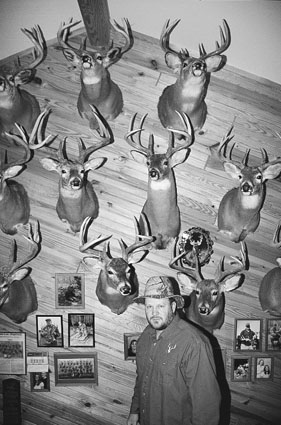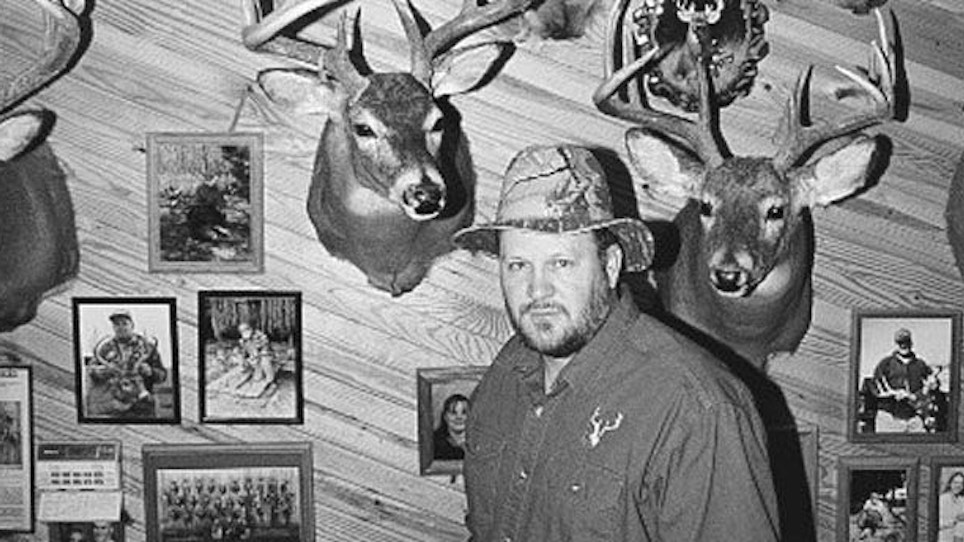Early Season Strategies
 “Early season is tough,” Webber concedes. “I’ll look for the most godawful thickets I can find because sometimes early on I think bucks will move around a little, even during the day, when they’re in very thick areas. Beyond that, I’ll try to hunt high ground in the morning, near points or hillside benches where bucks bed, and near thickets on low ground in the evenings.”
“Early season is tough,” Webber concedes. “I’ll look for the most godawful thickets I can find because sometimes early on I think bucks will move around a little, even during the day, when they’re in very thick areas. Beyond that, I’ll try to hunt high ground in the morning, near points or hillside benches where bucks bed, and near thickets on low ground in the evenings.”
Webber is a great believer in arriving at his stand early—at least two hours before he expects game to be moving through the area. He explained why with the example of one of his better bucks:
“One summer, while scouting fields from my car, I located several bruiser bucks in the same area. I knocked on the doors all around the area until I found a farmer willing to lease hunting rights.
“When I scouted the farm, I learned that the deer were feeding at night in the fields I had leased, and bedding down in a large thicket just off the property. I put up several stands to intercept the bucks on their way back to the thicket in the morning.
“I hunted hard for two weeks and saw nothing. Finally, I got up earlier than usual and went to my stand a good two hours before first light. It was almost sunrise when a buck came sneaking down the trail I was watching, and I arrowed it.”
Johnny concluded from that experience that it takes human scent at least two hours to dissipate from an area, and that by arriving at his stand at least that long before prime time, he greatly increased his chance of seeing deer.
Webber does not use climbing treestands. He hangs stands early where he plans to hunt, so he can slip in and out quickly and quietly.
Radical Scouting
At times, Webber is an impatient hunter. He exercises a great deal of discipline, hunting all day when possible, sometimes never leaving the stand from long before daylight until after dark. But there is a limit to how long he’ll hunt an area if he’s not seeing good bucks, and when he reaches that limit, he does something that for many bowhunters amounts to nothing less than violating a taboo: He intentionally flushes bucks from their beds during the hunting season. It has turned failure into success for him on more than one occasion.
He usually knows where the big bucks bed in a given area from countless hours of scouting, and if he doesn’t know, his knowledge of whitetail habits and of the area he is hunting enables him to find buck beds quickly. He takes a day off from hunting, leaves his bow behind, and sets off for big buck bedding areas at midday with a portable stand. He wades carefully through the brambles and the thickets until he flushes a buck from its bed. He looks around a little to see how the buck enters and exits the bedding area, then picks a place, hangs his stand, prunes a little if necessary, and leaves the area. He won’t return for at least several days.
When he returns, he arrives early and hunts that spot hard until he catches the buck entering or leaving the area.
Persistence Pays
If it’s any consolation for those of us who do not routinely kill Pope and Young bucks year after year, Webber admits to having had something of a long learning curve. Serious as he is about whitetail hunting, he laughs when he talks about the first few years he bowhunted.
“If I’d killed half the big bucks I’d seen my first five years or so of hunting, I’d be famous. Part of the problem was just a lack of knowledge and not knowing where to set up to put myself in bow range of deer. The other problem, though, was I’d miss. Several years there I missed three or four good bucks before I connected.”
Knowledge, experience, confidence, persistence, and other qualities are always part of the make-up of a consistently successful big-buck hunter, but behind it all is a passion for deer hunting that can’t be bought, manufactured, or faked. Johnny Webber epitomizes the old saw that genius is 90 percent sweat and 10 percent inspiration. It would be hard to find a deer hunter who invests more time and work in bagging trophy whitetails. At the same time, his ability to use unorthodox tactics to outwit big bucks is nothing less than inspired.






